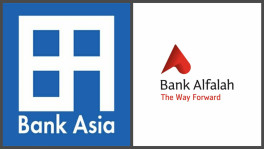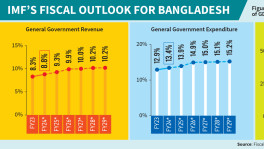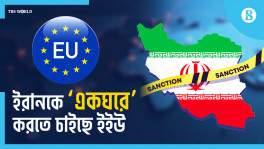Banglalink’s data revenue sees over 30% growth despite challenges
Yet the operator’s total revenue in the second quarter fell by 3.9 percent year-on-year to Tk11.1 billion

Despite the impacts of Covid-19 and tax hikes, the country's third largest mobile operator Banglalink registered a 30.3 percent year-on-year growth in data revenue in the second quarter of 2020.
The operator also registered a 3.3 percent year-on-year growth in data customers during the period, according to the second quarter report published on Thursday.
Yet the operator's total revenue in the second quarter fell by 3.9 percent year-on-year to Tk11.1 billion.
Banglalink, however, registered less revenue fall compared to the market leader Grameenphone, which saw an 8.2 percent year-on-year revenue fall in the second quarter.
VEON Ltd, a Netherlands-based Global Telecom Holding and partner organisation of Banglalink, claimed that the operator maintained a solid business momentum during the quarter as it continued monetising its investments in 4G capacity and focusing on selected digital services.
The report says its enhanced 4G network was a significant enabler of the 79.2 percent year-on-year increase in data usage recorded in the quarter, supported by the accelerated 4G penetration.
Given lockdown restrictions on customer movement until the end of May and continued health safety concerns, Banglalink actively promoted the use of digital channels to facilitate top-ups, account management and adoption of additional services.
As a consequence, the user base of the Banglalink self-care app increased by 58 percent during the second quarter of 2020 compared to that in the first quarter of 2020, while Banglalink's video streaming app "Toffee" saw a 62 percent rise in user numbers.
In line with the broader industry trend, Banglalink experienced a decline in its total subscriber base during the second quarter of 2020, which fell by 2.5 percent year-on-year despite a continued focus on customer acquisition.
Earnings before interest, taxes, depreciation and amortisation decreased marginally by 0.1 percent year-on-year during the time, mainly due to lower revenue and higher technology costs which were partially offset by the absence of lower operating expenses and the negative impact of tax changes.
Capital expenditure, excluding licences, was Tk1.9 billion, reflecting a front-loading of network investments to support 4G expansion. At the end of the second quarter, its 3G network population coverage was approximately 74 percent while 4G population coverage was 52 percent.
Banglalink was recently recognised as the fastest mobile network in Bangladesh during the first half of 2020.


 Keep updated, follow The Business Standard's Google news channel
Keep updated, follow The Business Standard's Google news channel
















